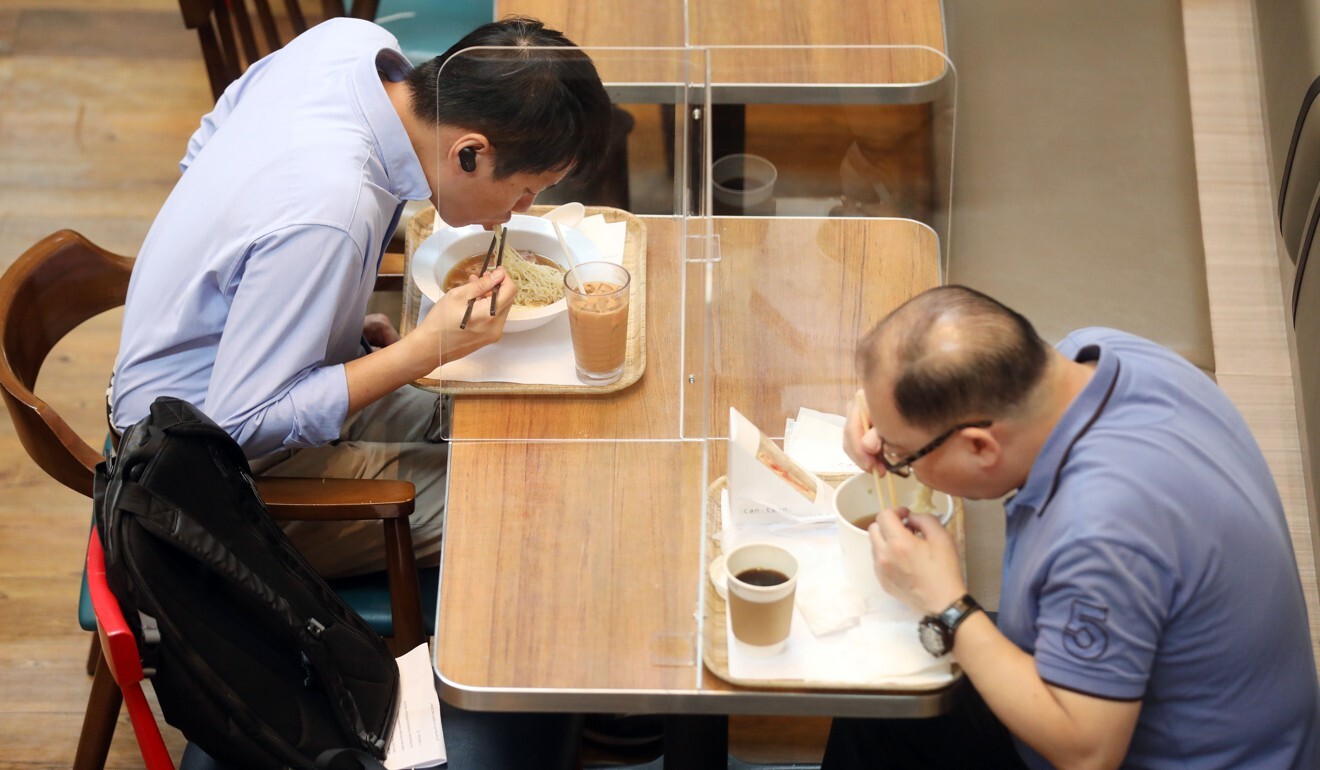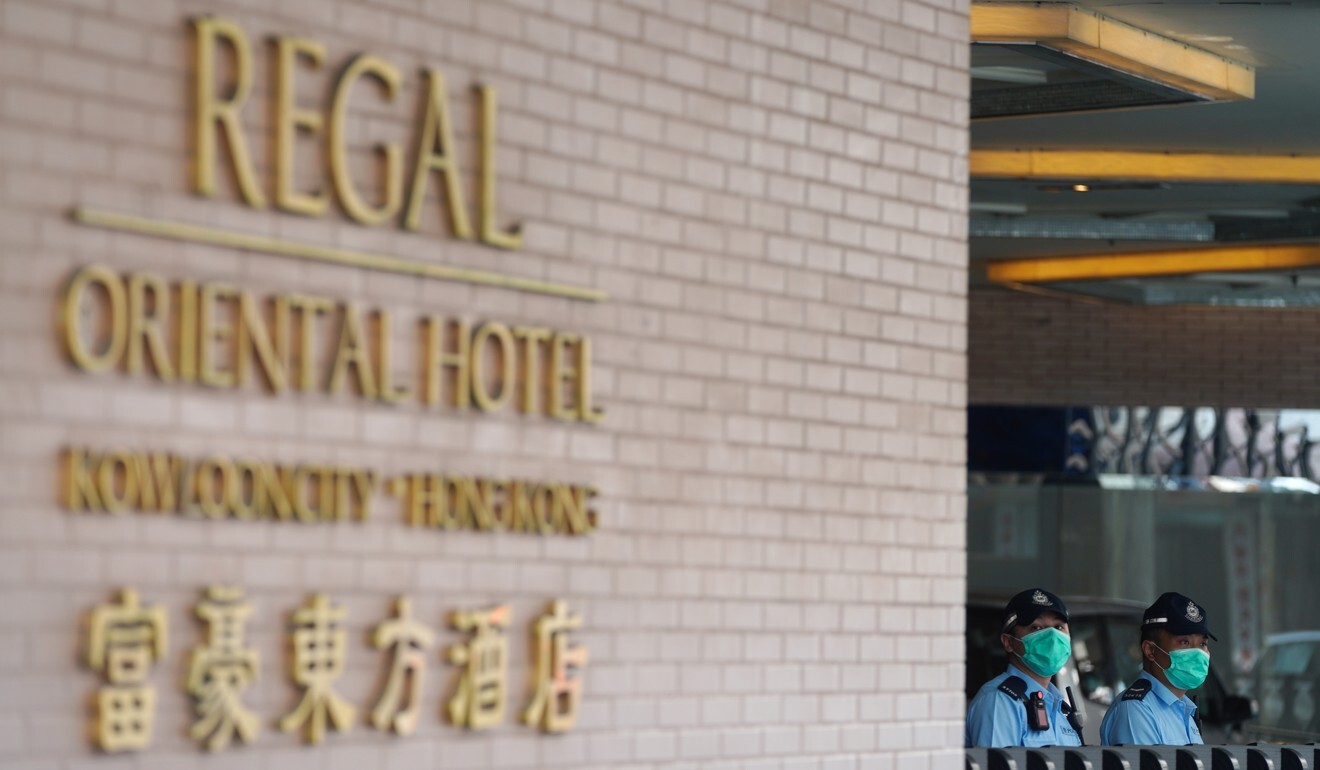
Coronavirus: Hong Kong reports 4 cases after day of zero infections as social-distancing rules extended
- Bars and other leisure spots to remain closed but restaurants no longer restricted to operating at half capacity
- All of the latest infections were arrivals either from the United States or Britain
Leisure and sports venues would remain shut until at least May 7, although restrictions on restaurants would be partially eased, officials said.
Chief Executive Carrie Lam Cheng Yuet-ngor said that despite no new infections being recorded on Monday, the closures and ban on group gatherings of more than four people were still needed as the city battled the pandemic, which had infected 1,029 people.
“This is not the time to be complacent,” Lam warned. “If we relax, the good work that we have done will be in vain. That’s why the bans, that would have expired on April 23, will now be extended by two weeks.”
Dr Chuang Shuk-kwan, head of the communicable disease branch at the Centre for Health Protection, also pointed to the risk of “silent transmission” by asymptomatic carriers who spread the virus without knowing it.
“I think the social-distancing measure is very important to prevent an outbreak in the society,” Chuang said.
The newly infected were discovered during routine testing of travellers at AsiaWorld-Expo and included a couple in their late 30s who developed symptoms while in the United States. A 13-year-old female student and a 25-year-old man flying in from Britain were the other two latest cases. Twenty more people have been discharged from hospital, health officials said.
Under the partial relaxation that starts Friday, restaurants will no longer be required to operate at half capacity. But they must continue to keep tables 1.5 metres apart or separated by partitions for at least another 14 days.
Those rules were introduced in late March when the government threw a net over the social life of the city, eventually shutting 11 types of venue, including bars, pubs, beauty salons, massage parlours, karaoke bars and fitness centres. They will remain closed, along with 163 barbecue sites and 41 campsites under the government’s management.
The easing of the number of patrons permitted in restaurants made sense because the other two measures were effectively limiting how many customers were being served, according to Secretary for Health Professor Sophia Chan Siu-chee.
“If one can do these measures effectively, that is having 1.5 metres apart between tables as well as having effective partitions, probably the number of customers has already fallen below 100 per cent,” Chan said.

But the relaxation did not go far enough, said Liberal Party lawmaker Tommy Cheung Yu-y
an, the representative for the catering sector.
“Do any Hong Kong officials know economics? Or is economics in their dictionaries?” he said. “They should not listen to one side only. To me, the so-called experts do not have scientific evidence and think the relaxation should only come after some 20 days of zero cases.”
Cheung suggested bars and entertainment businesses be allowed to reopen under the same rules as the restaurants, instead of waiting until May 7. He also called for HK$5 billion (US$645 million) more in funding for the catering sector.
“By extending these measures, the ones who [are] hurt most are frontline staff,” he said, pointing to how bosses were struggling to pay full salaries to employees given the drop in revenue.
That economic lifeline came after the city suffered a spike in infections in March as residents, many of them students, returned from high-risk areas such as Europe and North America.
Dr Lau Ka-hin, chief manager of quality and standards at the Hospital Authority, said the teen was in stable condition and being monitored at Queen Mary Hospital with no symptoms observed.

In recent weeks the government has stepped up its screening of arrivals. Authorities announced Regal Oriental Hotel in Kowloon City would be converted into a quarantine facility to house travellers returning from overseas, beginning Wednesday. The move was deemed necessary as all arrivals are now required to remain isolated as they wait for their test results before undergoing mandatory quarantine at home.
Responding to earlier criticism that the hotel was located in a populated area and 36km from the airport, the health secretary admitted the search was “not easy”.
She said the authorities had tried looking at hotels closer to the airport, but factors such as their size and whether they had a suitable ventilation system had to be considered.
Meanwhile, Dr Wong Ka-hing, the centre’s controller, urged the public to pay attention to which type of tests they were given.
He said some relied on the detection of antibodies, an immune mechanism triggered by an infection, which was not as accurate as the one used in hospitals, which was based on the virus’s ribonucleic acid.

